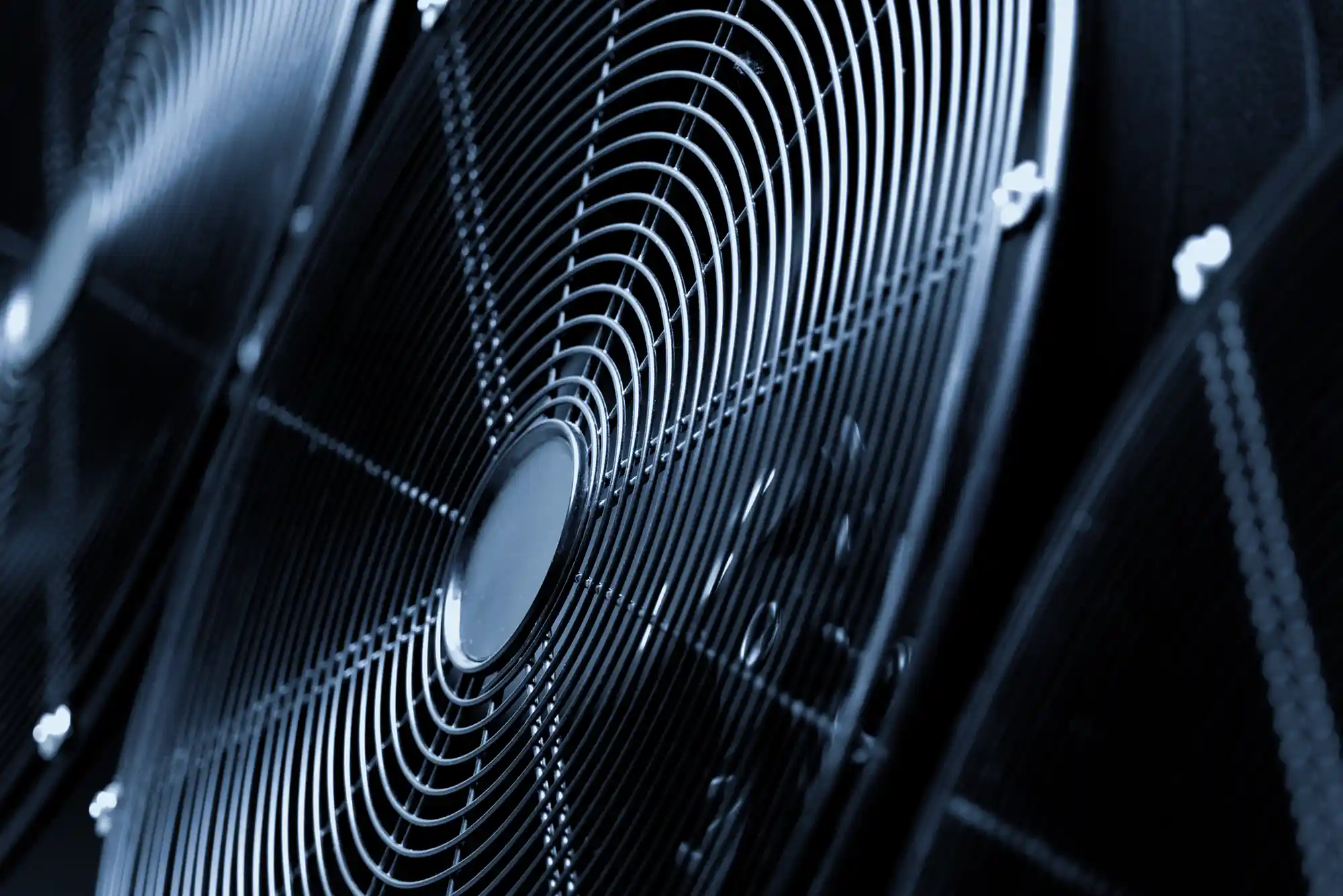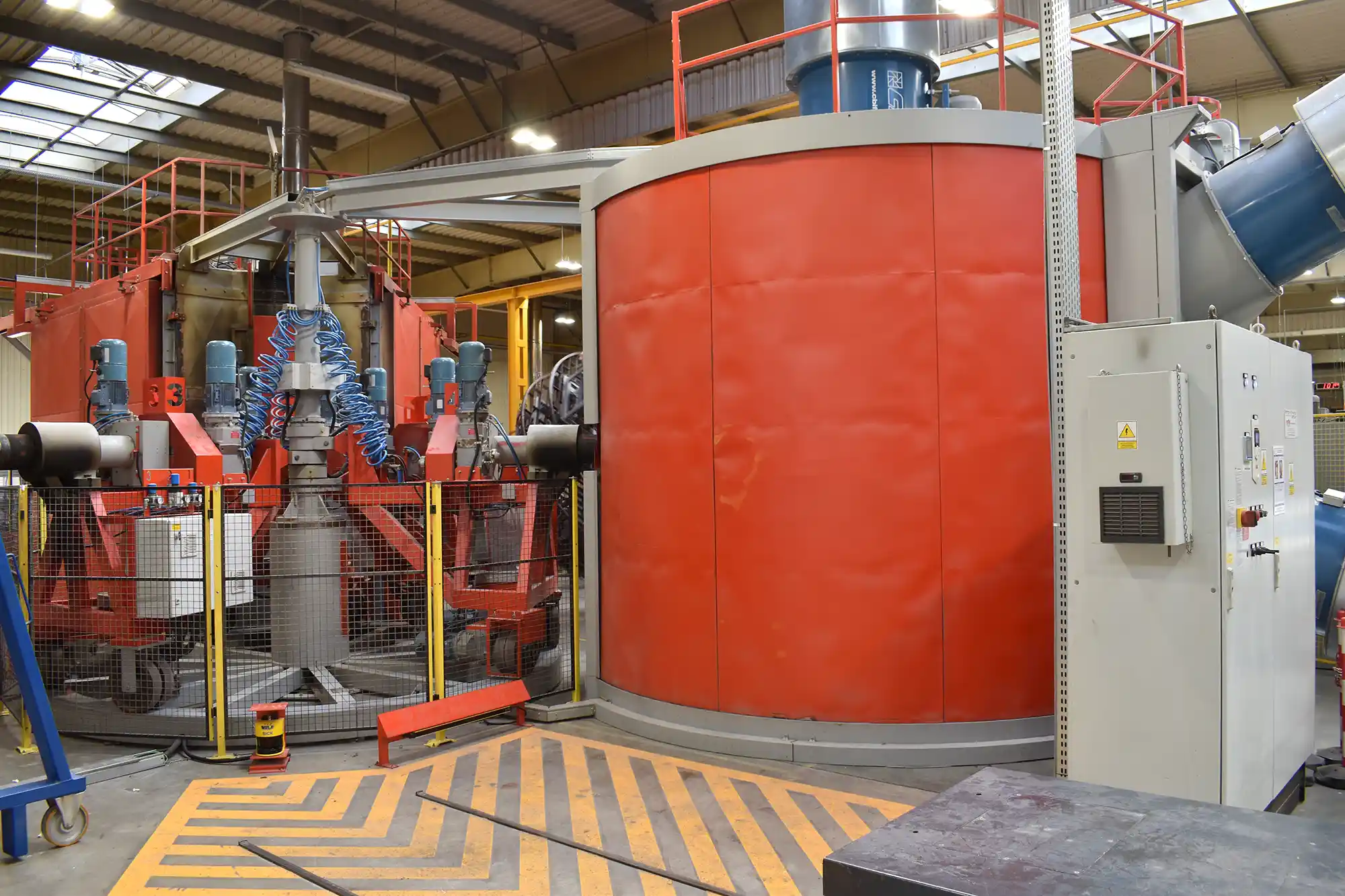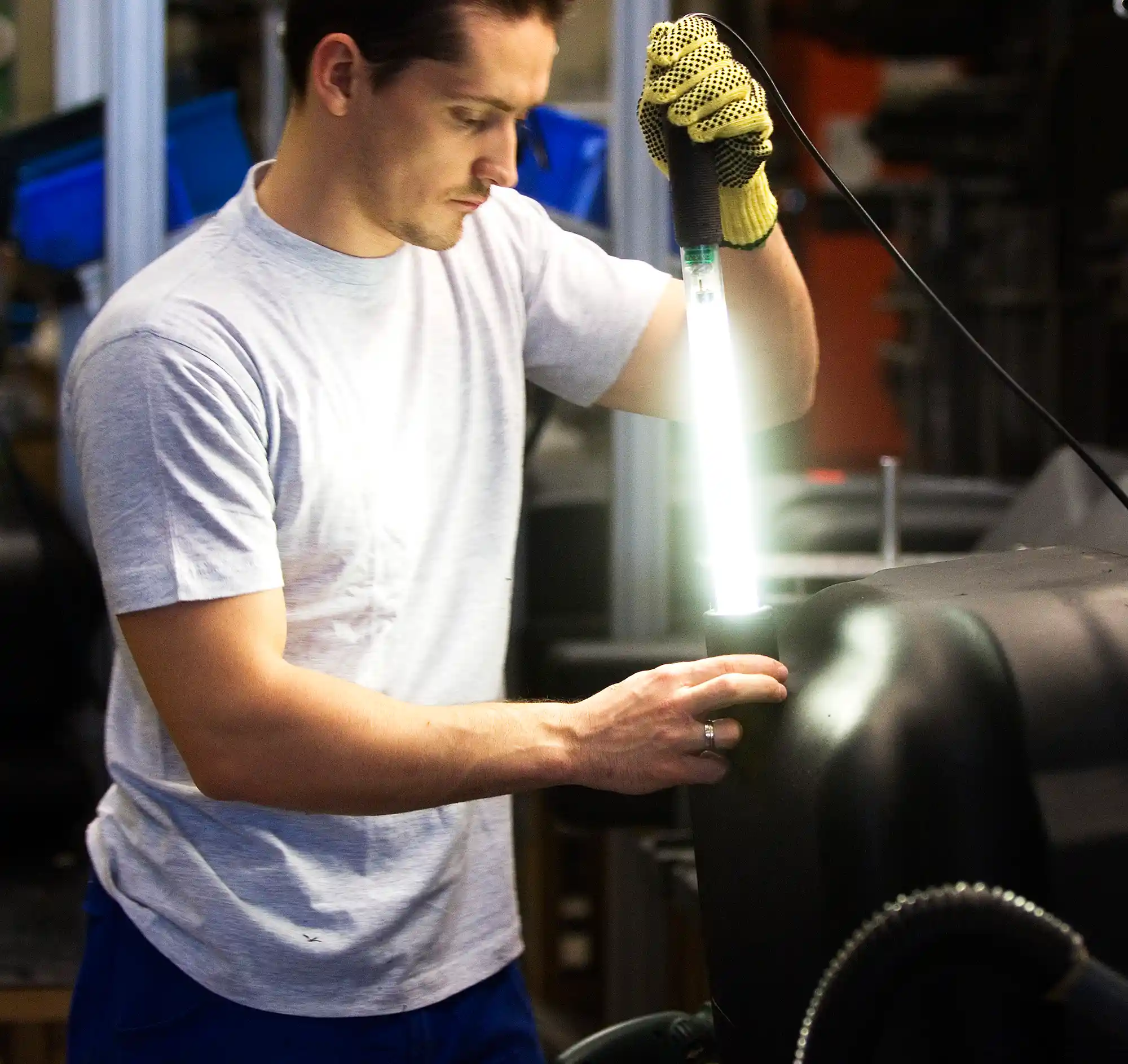Cooling process rotomoulding - an important step
During the cooling process in rotomoulding, the moulded material is cooled to the correct temperature, allowing it to solidify into a fixed shape. This stage is crucial to maintaining the dimensional precision and mechanical properties of the product. The cooling process is usually carried out by forced airflow directed at the mould. Sometimes this is combined with misting or even spraying water onto the mould to intensify the process. The product can also be cooled from the inside by blowing cool air through the inside of the mould into the product and flushing the hot air through a vent pipe in the mould.
It is extremely important to adapt the cooling rate of the product to the type of plastic, the shape of the product and its current phase (molten, crystalline, or solid). The cooling phase also determines the material properties of the final product, influencing its durability and strength. When the product has reached the right hardness and stability, it is ready to be removed from the mould. The mould then leaves the cooling chamber and proceeds to the mould removal area of the finished product.


Control over the cooling process
Controlling the cooling process in rotational moulding is important to achieve a high-quality product. Precise control of cooling parameters such as temperature, airflow and cooling time determines the final mechanical and visual properties of the product. Control of the cooling process rotomoulding can be achieved by adjusting the air flow rate. Cooling plastic fast can lead to warping of the finished product due to uneven cooling rates in different areas of the mould and the overall component. In addition, it can also lead to increased internal stresses and reduced structural integrity.
The speed of the cooling process affects the crystallisation of the resin. Slow cooling can increase the density of the resin and reduce the impact strength of the part. A product cooled faster will have higher impact strength. The cooling phase plays a key role and requires an appropriate adjustment of the cooling rate to achieve the best possible performance. By precisely controlling the cooling plastic process it is possible to achieve excellent quality and reproducible products that meet even the strictest quality standards.
Cooling plastics as a decisive step in the rotomoulding process
The cooling phase in the rotational moulding process is a key moment that determines the final shape, strength, and quality of the manufactured product. It is during the cooling process that the plastic fixes and retains its shape inside the mould.
By controlling the cooling process, it is possible to avoid deformation of the material and to ensure the correct impact strength and shape of the product. A properly implemented cooling step has a significant impact on the appearance of the final product and its durability under various operating conditions. Therefore, the cooling process rotomoulding is an integral element that must be precisely controlled to guarantee the high quality and consistency of the manufactured products.
Check out the next step in the rotational moulding process!
Demoulding

Łukasz
Sales manager
"The harder, the better."
your idea
to life. Start now!


